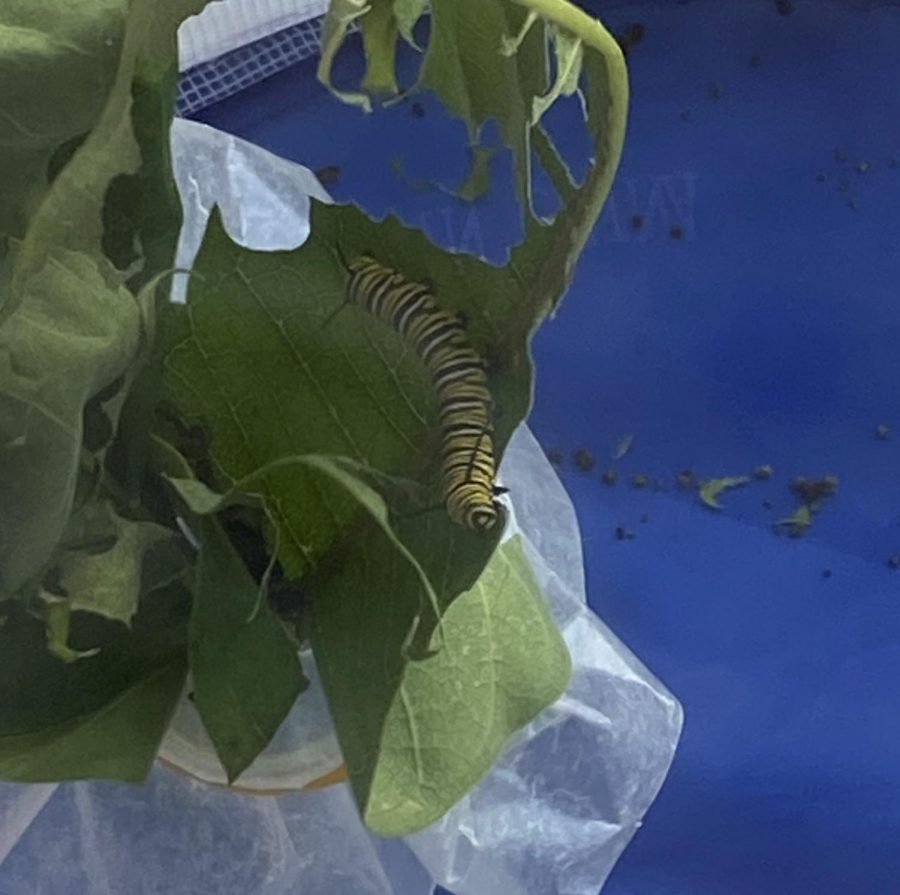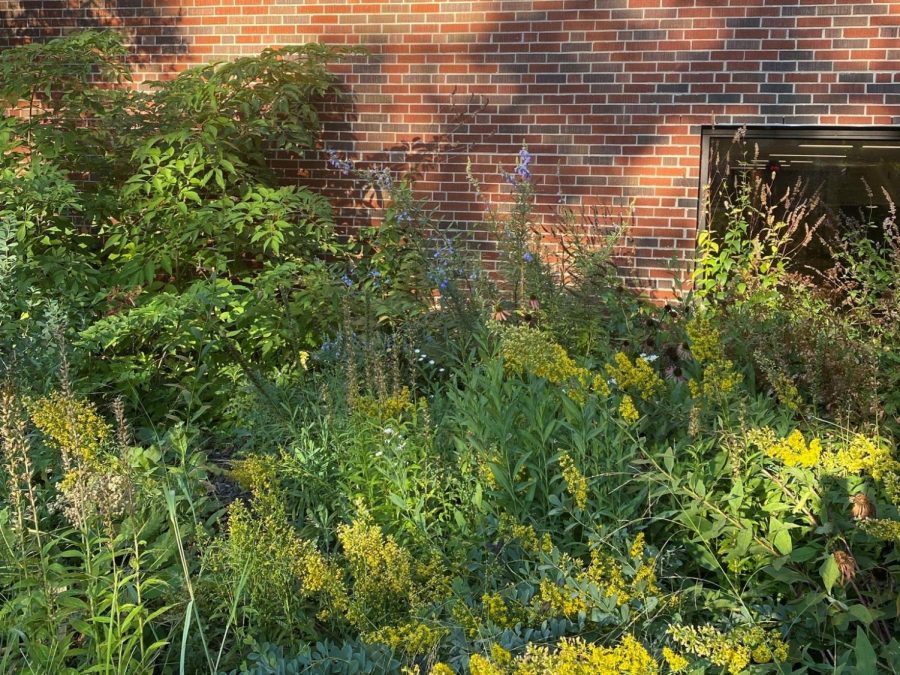Club Green welcomes butterflies back for fourth year in a row
Photo by Gloria Gonzalez
Club Green’s butterfly garden is planted on the east side of the school, near the arcade.
September 19, 2021
For Club Green, fall means butterfly season. In the coming weeks, West Chicago Community High School’s environmental club, run by science teachers Suzanne Burchacki and Brianne Ferreiro, will be maintaining their existing butterfly garden, originally planted four years ago. Club Green’s butterfly garden is inviting native butterflies and insects back to their homeland. The butterfly garden is in the arcade area by the school’s auditorium, an area that was carefully considered for placement due concern for people with bee allergies.
The garden was not Burchacki nor Ferreiro’s idea, but actually Gordon Cole’s idea. Cole worked in renovations, but has now retired. Due to problems in the environment, the native insect population has decreased these past couple of years. Club Green’s butterfly garden is hoping to combat this problem by planting over 40 species of flowers, including milkweed to attract monarch butterflies, and Queen Anne’s lace to attract swallowtail butterflies.

“I actually have a little table with a butterfly cage in the science wing. I’ve got three monarch caterpillars right in there right now that I’m raising,” said Burchacki, one of Club Green’s leaders.
The caterpillars will be ready to be released anywhere between September 23 and 27 into the school’s butterfly garden, but they will not remain there: they will more likely migrate south to the warmer climate.
When asked where the money for this garden came from, Burchacki said, “Some of it came from the school. Some of it was from Club Green. For the plants, we actually just bought seeds, and the seeds were not expensive at all, they’re pretty cheap. Had we bought the actual large plants, that would’ve been a lot of money.”
According to Burchacki, planting a garden is pretty easy once you have the money and time to do so; however, maintenance is usually the bigger issue. This is no obstacle for Club Green: members have even come in during the summer to make sure the garden is well-maintained. Members weed out the garden, and replant in the fall, so flowers can winterize and grow in the spring. Club Green members work year-round, and during the winter, they do some planting in the greenhouse. However, the club needs help.
According to Burchacki, “Right now, everybody graduated. So, I’m looking for new members, I only have four or five. Everyone left us, and now we’re basically starting over again because nobody really joined last year because of COVID.”
One of Club Green’s newest members, freshman Cristina Correa, mentioned it was “very exciting to try to find the butterflies.”
Students interested in projects like the butterfly garden should stop by room 2432 after school every other Tuesday (more information is in the student announcements). Burchacki mentioned there are some other projects that may be in the works, including working with Tree-Plenish is an organization that provides tree saplings to grow in the community. The saplings are provided at no cost to the school, most likely thanks to a grant.
Projects like the butterfly garden are an incredible way of helping combat environmental issues, and for those who do not have time to participate in Club Green’s activities, there are ways they can help the environment on their own: limiting plastic use, reusing items, and recycling is a great way to start.




